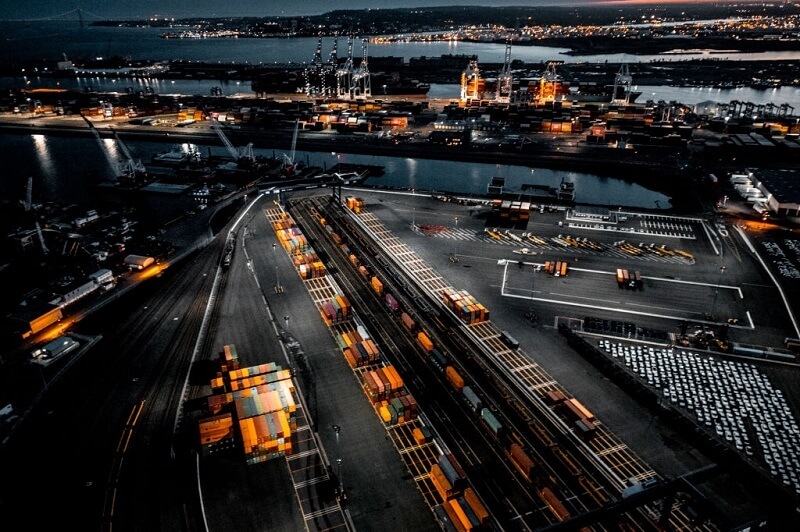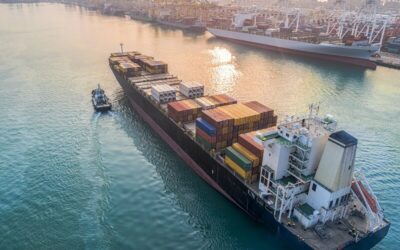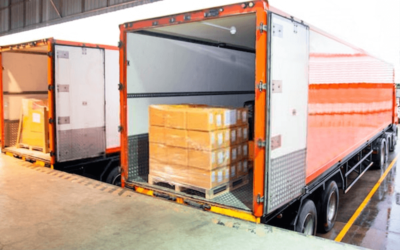How to Optimize the Cost of Freight-In
Freight expense is something every company has to worry about if they have to ship or receive cargo. It’s the price that carriers charge for sending something from one location to another.
That’s why most of these companies are looking to optimize the cost of freight-in. They always include freight cost reduction in their plan. Optimizing freight expenses helps reduce the cost of goods sold (COGS), cost of received goods, shipping costs, and makes bookkeeping easier. Reducing the cost of freight helps improve receivables while making your expense account lighter with smaller payables.
In this article, we’ll discuss the potential reasons why freight costs go up, as well as the steps you can take to reduce the cost of freight-in.
On top of that, you’ll know how to save on freight. Let’s dive right in.
Table of Contents
What Ramps Up the Cost of Freight-In?
Whenever you move goods, you incur some kind of freight expense. However, to effectively optimize the cost of freight-in, you need to understand what contributes to the cost.
The cost of freight can be affected by local, environmental, and macroeconomic factors.
The following are some of the biggest offenders for high freight charges.
1. Government Regulation – Many countries have specific laws, regulations, and policies that can have an impact on how shipping companies operate. These policies can affect retailers, shippers, and even local freight services. If regulation begins to affect business, a shipping company will increase the freight bill to cover their losses. Some regulations that may affect freight costs include carbon emission laws, night driving bans, and working hours’ limitations. That’s why car shipping rates can skyrocket in some cases.
The second part of this equation is infrastructure ie Roads, airports, and Ports. The more developed the country is, the less the Exworks cost is, and the less developed the country is, the more the ex-works cost is.
2. Fuel Costs – In some cases, a freight company may include a fuel cost component to better evaluate the operating expense. That’s why a lot of companies tend to be confused with ocean freight and air freight because the fuel cost component may make ocean freight more expensive. In any case, if the price of fuel increases, the additional raw materials cost will be written on the consumer’s freight account.
3. Current Events – Maritime emergencies, piracy, restricted air spaces, and government sanctions can alter freight costs and delivery expenses. Companies may have to take longer routes, spend more time at docks, and pay workers higher wages. All of this adds up to transportation costs.
4. Freight Demand and Trade Balance – Trade balance plays a big part in freight cost as the amount of full container that is being shipped from East to West there is an imbalance of container shipped from West to East and due to this the return journey of the Containers from West to East is usually higher because of empty repositioning cost associated with it. Also, we see that after Covid, the demand for freight is high, as most goods are manufactured in the Far East, there’s a good chance that shipping companies will start charging more for the imbalance trade. Other things that can contribute to this are port backlogs, expensive containers, and premium positioning.
Understanding the factors above will help you optimize the freight-in costs.
How Much Does Freight Shipping Cost?
Freight shipping cost is not constant and it depends upon which service do you use. It also depends upon which mode of transport you prefer either train, land or sea. The dimensions and volume also affect the shipping cost.
It is very easy to find out how much freight shipping costs. You can use online calculators to find out the global cost of freight shipping. And this way you can opt for the lowest cost freight shipping.
5 Steps to Optimize the Cost of Freight-In in 2021
Here’s a 5-step process for optimizing your freight-in costs without worrying about your balance sheet.
1. Understand the Current State of Logistics and Ship Accordingly
COVID-19 has caused a lot of problems the previous year, and it’s going to continue affecting global trade for a while. The demand for freight has skyrocketed because people are ordering everything online. As mentioned above, higher freight demand translates to higher shipping rates.
While most buyers understand the situation, it’s still the shipping company’s job to explain the reasons for higher shipping charges to customers.
2. Audit Invoices and Quotations
Miscommunication during invoice delivery/reception can lead to higher costs for buyers because they may not fully understand how the process works. Charges may ramp up by the time the invoice is drawn up.
For example, fluctuating fuel costs may increase without either the company or the customer noticing.
To avoid any problems such as income statement issues (and general miscommunication), develop a process of frequent invoice audits to ensure that both you and the customer are on the same page.
3. Ensure Flawless Documentation
Incorrect documentation, journal entries, and ending inventory numbers can lead to higher costs at the time of arrival. Regardless of whether the issue was a typo, missing entry, or an incorrect financial analysis, it can lead to higher costs.
Considering you may already be seeing higher freight costs, it’s best to ensure correct documentation and leave no room for error. It’s very important to minimize human error when optimizing for the cost of freight-in.
4. Improve Collaboration Among Departments
Since current events can cause issues for shipping, various departments must work together. For example, a company’s warehouse planning and coordination department should work closely with the procurement and shipping department.
Increased collaboration and visibility among these departments will ensure that they can make data-backed decisions on the optimal shipping routes.
Better collaboration can also help make it easy to work on financial statements. For example, if everyone understands things like freight on board, free on board, FOB shipping point, FOB destination, freight out, inventory costs, line items, what to debit, and more, it would make for easier accounting of freight expenses.
5. Opt for the Ideal Shipping Service
Lastly, it’s crucial to choose a shipping service that’s efficient, internally optimized, and communicative. Companies like Qafila are primed to efficiently manage the cost of freight-in and freight out.
They have internalized systems to ensure the final customer gets the most optimized shipping rates. These systems take current events into account, track raw material prices, and have cloud systems that are updated in real-time.
How to Keep Shipping Costs Low?
It is always in your favor if you provide any kind of relief to the customers. The low shipping costs are often attractive for the customers. There are several strategies that you can apply to keep the shipping cost low. Here are a few of them:
It is better to link up with as many carriers as possible. Because each one of them asks for their price and thus, you can negotiate with the best one. But the best carrier would be the one who is in your region.
You should take care of the packaging and the dimensions. Try not to leave any volume unoccupied. Use the containers that don’t leave extra space. Because the customer will be paying for the volume he consumes. So the idea is to lower the dimensions as much as possible.
There is no need to hesitate in negotiating the prices with the shippers. Or, even asking for a discount. You should always look for discounted services. Furthermore, you may have to make changes in destinations as well. Because the destination point is far, it would cost more.
How to Save Money on Shipping Cost?
1.It is a misconception that to avail discounts one has to be a large size organization. You can still go towards negotiation. To consult some freight forwarder or any other third-party logistics would be helpful for sure. You must try to get some discount.
2.Although, people usually ignore this but it is one of the simplest things to do to reduce your inbound shipping costs. First of all, you have to keep a check on your vendors. Those who receive the discount from the carriers but they might not be forwarding it to you. While controlling your shipments you can reduce your costs. You should not ask for the payment in advance) but a rather wait for their response.
3.Don’t use the transportation mode which could cost you more as compared to the one you could use with ease. For example, choosing land service over the air would be cost-effective.
4.There’s always a probability of errors in invoices. Thus, it is a very crucial step to keep an audit of your invoices.
5.You need to manage shipment with efficiency. And for that, you must consolidate your shipment.
Try to follow these mentioned plans and you will see the difference soon.
Bottomline
If you’re looking at high shipping rates, your first step should always be to understand what is contributing to those rates and any supply chain challenges. Understand that will help you figure out what the average shipping rates are and how you can manage them.
Afterward, you can go through the steps above or choose a shipping company that does all of that for you. By the end, you’ll have adjusted the cost of freight-in as much as the situation allows.



![Freight Market Update Air & Ocean [November 2021]](https://www.qafila.com/wp-content/uploads/2021/11/Freight-Market-Update-Air-Ocean-November-2021-400x250.jpg)


